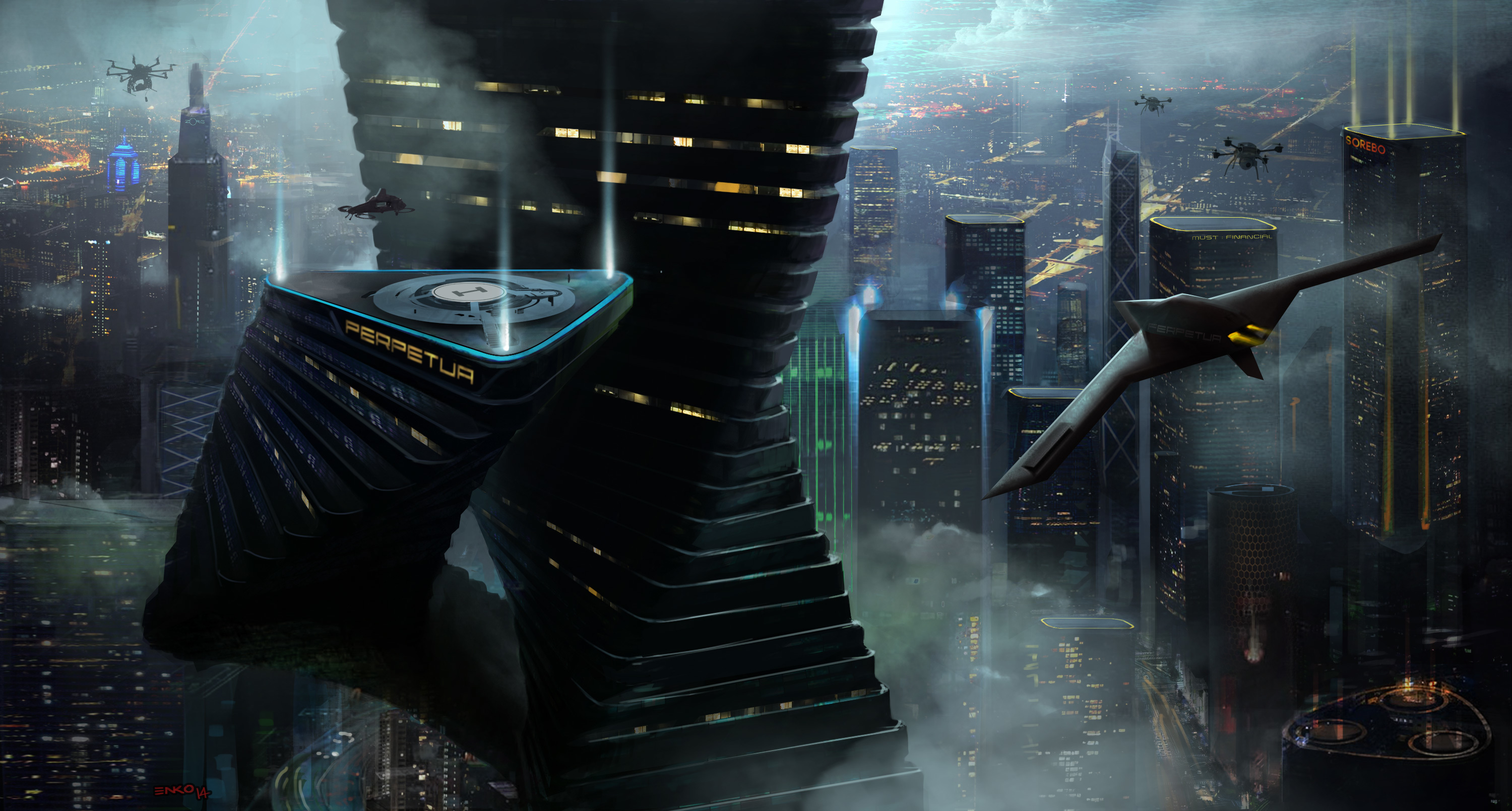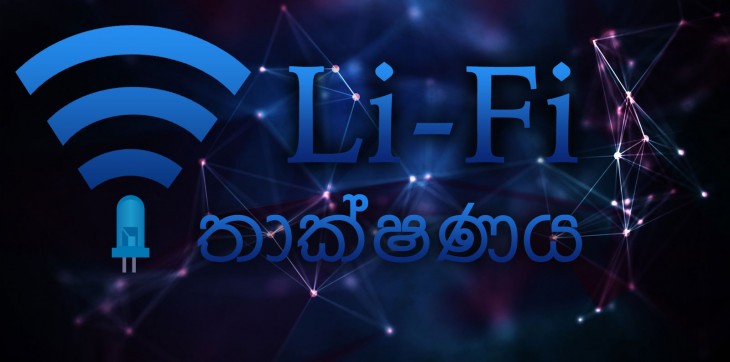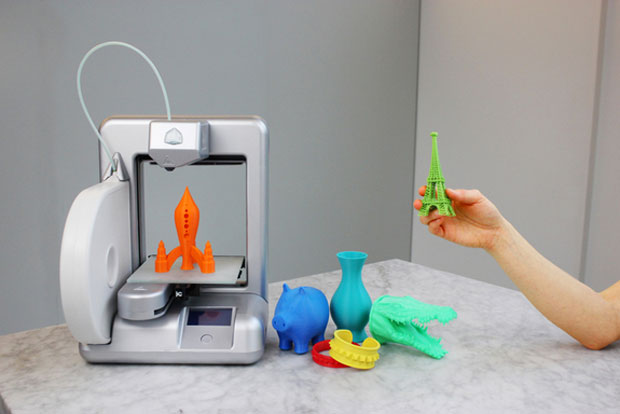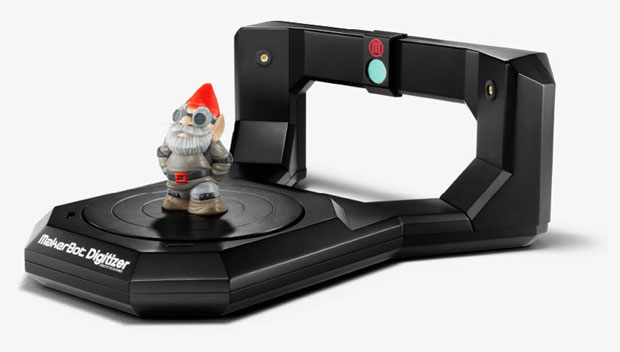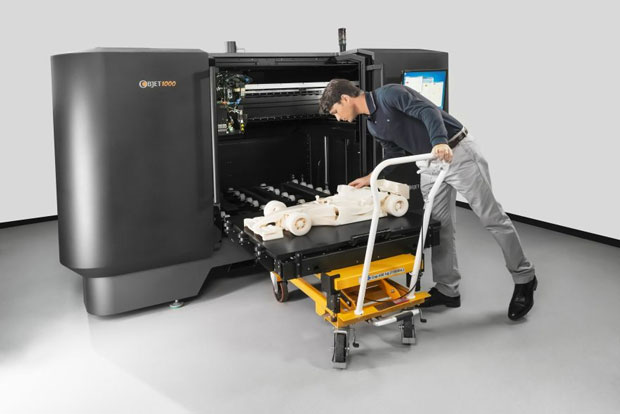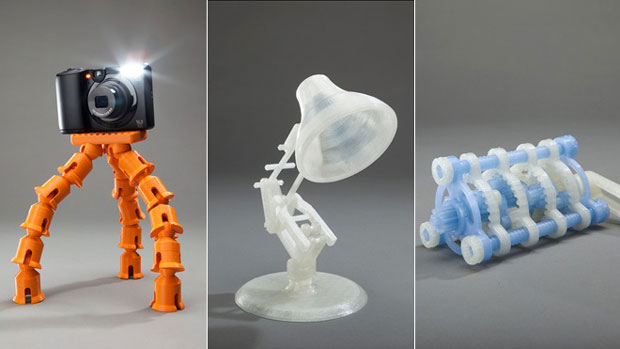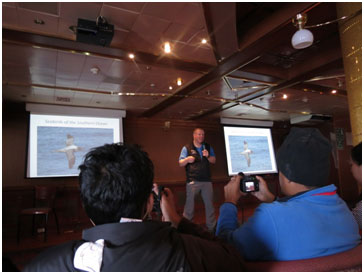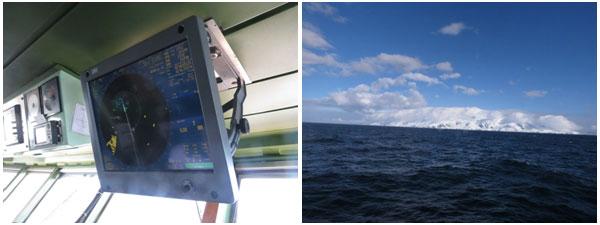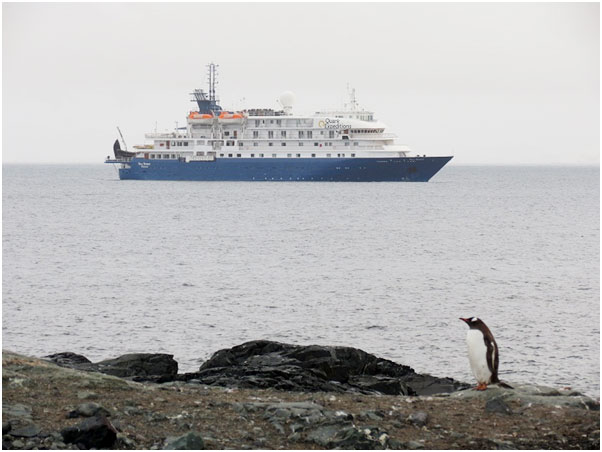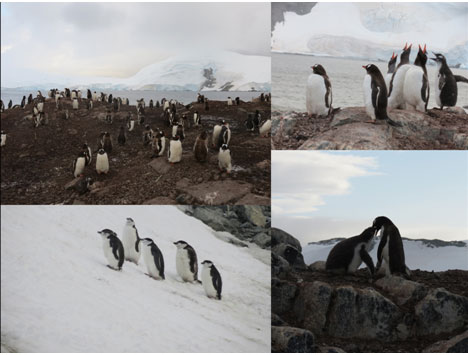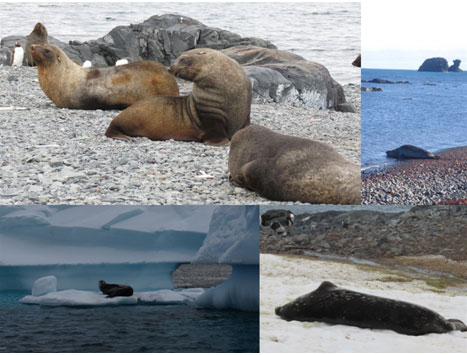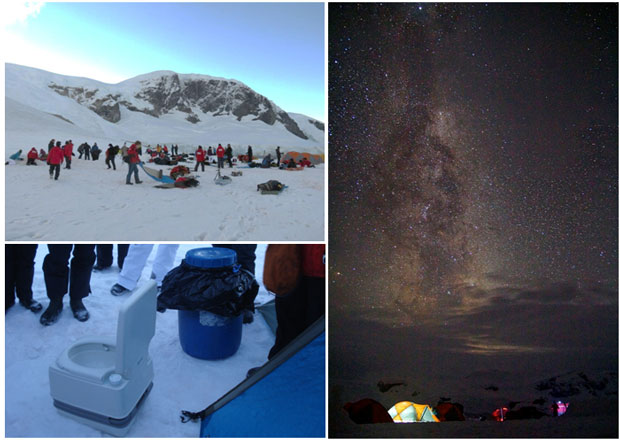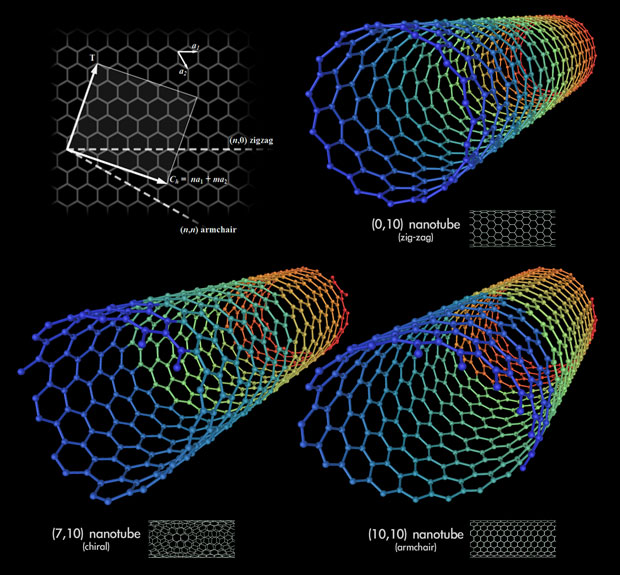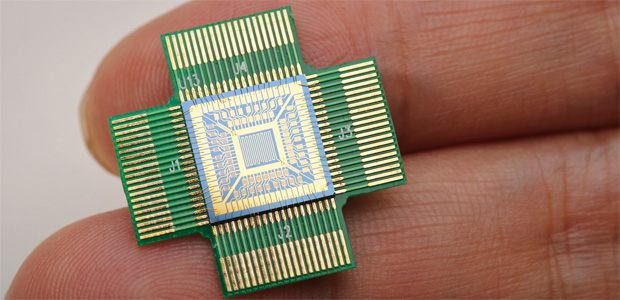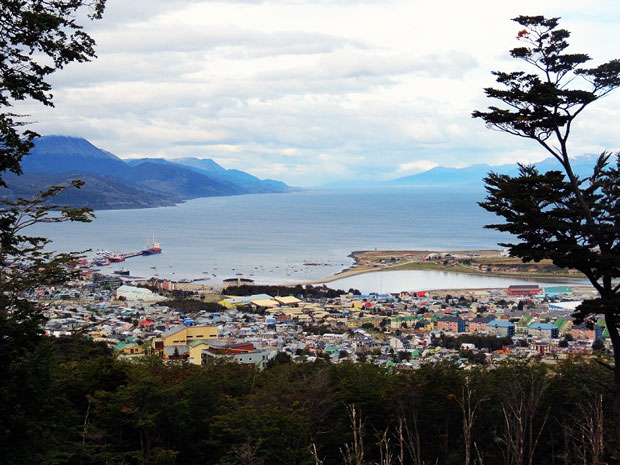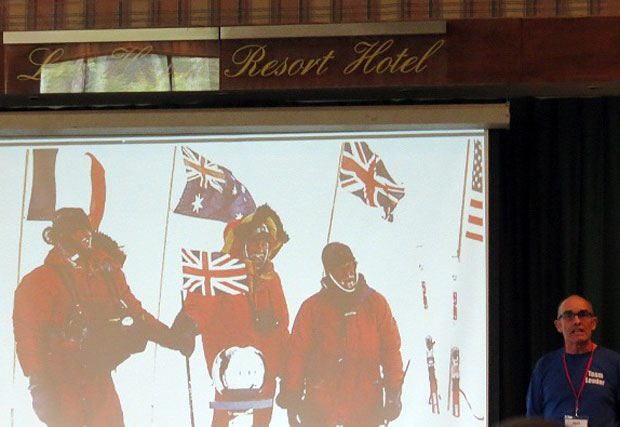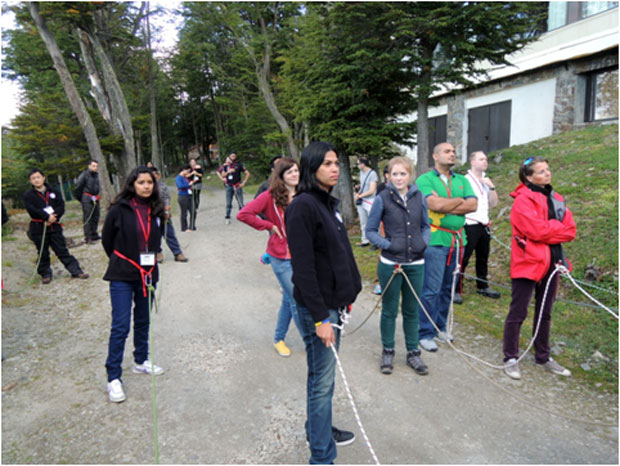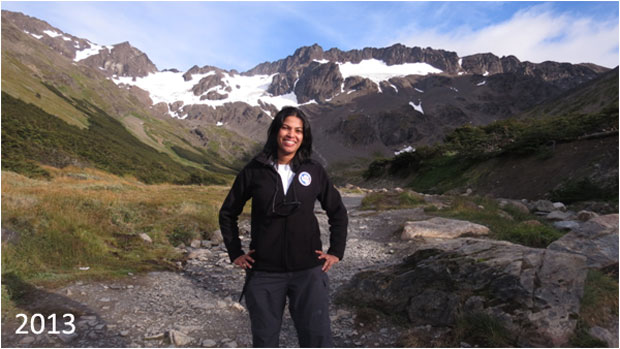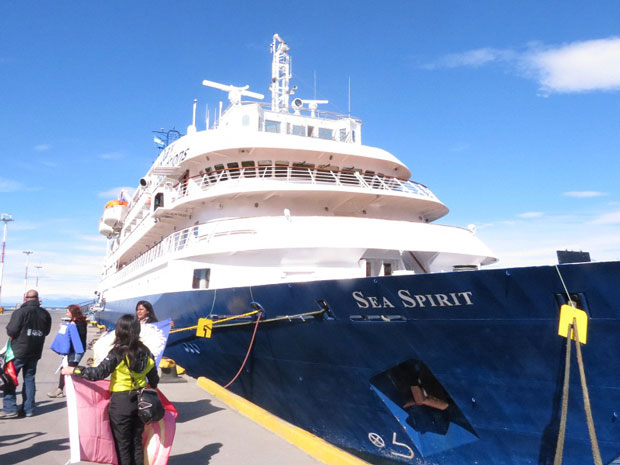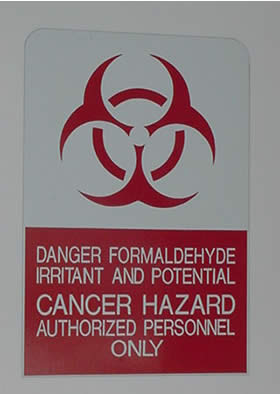මීට වසර හයකට පෙර දිවයිනේ විශිෂ්ඨතම කර්මාන්තකරුවාට හිමි රන් සම්මානය පිරි නැමීමේ වර්ණ රාත්රිය පැවති, කොළඹ ගලධාරී හෝටලයේ දී එදින ප්රධාන අමුත්තාගේ දෙසුම කළ මහාචාර්ය තිස්ස විතාරණයෝ, රත්තරං වටින කතාවක් කළේ ය. ‘අනාගත ශ්රී ලංකා සෞභාග්යයේ යතුර’ නැණෝ තාක්ෂණය බැව් එතුමෝ එහි දී සපථ කලහ. රට සංවර්ධනය කිරීම උදෙසා නිසැකවම ඉදිරියේ දී නැණෝ තාක්ෂණය යොදා ගන්නා බවට එතුමා පලකල අදහස ලියුම්කරුගේ සිතට ගෙන ආවේ අළුත් බලාපොරොත්තුවක් ය. එතැන් සිට ඔහු සිතා බැලූවේ මීට පෙර කිසිදාක අසා නැති නැණෝ තාක්ෂණය රටක ඉදිරි ගමනට මේ හැටි බලපාන්නේ කෙසේද කියාය.
මෙයින් වසර දෙකකට පසු, කොළඹ විශ්ව විද්යාලයේ, මානව සම්පත්, අභිවර්ධන ආයතනයේ අධ්යක්ෂවරයා වූ ආචාර්ය එච්. කේ. හිරිඹුරේගම මහතා ගේ දෙසුමකට සවන් දීමේ අවස්ථාව ලද ලියුම්කරුට, ආචාර්ය හිරිඹුරේගම මහතා විසින් නැණෝ තාක්ෂණය පිළිබඳව තම සිතේ ඇති කළ කුතුහලය සංසිඳුවා ගැනීමට නිසැකවම හැකි වූයේ, අග්නිදිග ආසියාවේ සිටින කීර්තිමත් නැණෝ තාක්ෂණවේදී ඉංජිනේරුවරයෙකු, විද්යාඥයෙකු වන ආචාර්ය ලිලන්ත සමරනායකයෝ, වර්ෂ 2011 දී පේරාදෙණිය විශ්ව විද්යාලයේ ඉංජිනේරු පිඨයේ දී දැන හඳුනගැනීමෙන් පසුව ය.
ආචාර්ය ලිලන්ත සමරනායකයෝ, ශ්රී ලක් මවගේ තවත් වටිනා මානව සම්පතක් බැව් වටහාගත් ලියුම්කරු ජාතික රූපවාහිනිය ඔස්සේ මෙන්ම ‘දිවයින’ ඇතුළු ජාතික පුවත්පත් ඔස්සේ ද නැණෝ තාක්ෂණය පිළිබඳ ඔහු සතු දැනුම රටටම හෙළි කළේ, මේ වටිනා මානව සම්පත, ධනවත් පොහොසත් රටකට විකිනීයාදෝයි යන අනියත බිය නිසා ය. කොටින් ම මෙම මානව සම්පත රැුක ගැනීම උදෙසාය.
එසේ ම පොහොසත් රටක් විසින් මොහු ගිල ගැනීමට පෙර, ඔහු සතු දැනුමෙන් නැණෝ තාක්ෂණය හරහා අපගේ මාතෘ භූමියට උපරිම මෙහෙවර ලබා දීමේ ද පරමාර්ථයෙනි. එහෙත් පසුකලෙක, නැණෝ තාක්ෂණයෙන් රට බැබලවීමට සිහින මැවූ මහාචාර්ය තිස්ස විතාරණයෝ, ජ්යෙෂ්ඨ අමාත්යවරයෙකු බවට පත් වී විවේකී සුවයෙන්, සිහින දැකීමට හා සිහින මැවීමට ඉඩහසල ලද්දේ ය. නීතීඥවරියක විද්යා හා තාක්ෂණ අමාත්ය පදවියට පත් වීම නිසා ය. නැණෝ තාක්ෂණය සිහිනයක් නොව සැබෑවක් බවට පත්කරගත් ලෝකයේ බොහෝ රටවල් මේ වන විට අප පසුකර දුර ගමනක් ගොසින් ය. අපි තවමත් රන් ආකරයක් මත හිඳගෙන බුලත් විට සපමින් හතර අත කෙල ගසමින් සිටින්නෙමු.
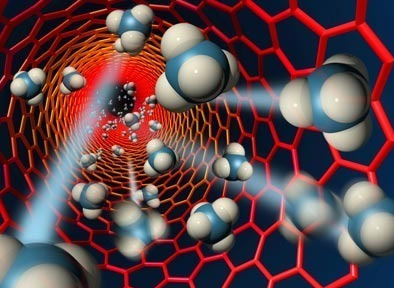
ඕනෑම පදාර්ථයක් නිර්මාණය වී ඇත්තේ අණුවල එකතුවෙනි. පදාර්ථයේ මූලික ඒකකය වූ අණුවක ආකෘතියේ අප විසින් ඇති කරනු ලබන වෙනසත් සමඟ එකී ආකෘතිය හරහා නිර්ාමාණය වන්නා වූ නව්ය පදාර්ථයන් හී ඇති රසායනික හා භෞතික ගුණාංගයන් මානව වර්ගයාගේ යහපත උදෙසා යොදා ගැනීම, නැණෝ තාක්ෂණවේදය හරහා සිදුවෙමින් පවතී.
නැණෝ තාක්ෂණවේදය ගැන පළවූ ”නැනෝ තාක්ෂණය ගැන දැනගනිමු” ලිපිය බලන්න.
නැණෝ තාක්ෂණය උදෙසා, පර්යේෂණ සහ සංවර්ධන කටයුතු කිරීම (Research and Development) වෙනුවෙන් ලෝකයේ යම් යම් රටවල් වාර්ෂික අයවැයෙන් වෙනු කරනු ලබන අතිමහත් මුදල් සම්භාරය ගන සිතන විට එදා මහාචාර්ය තිස්ස විතාරණ මහතා දුටු සිහිනය, ඇලඩින්ගේ පුදුම පහන ලබා ගැනීමේ කතාව වාගේ යැයි යමෙකුට සිතෙන්නට ද පිළිවෙන.
වර්ෂ 2015 දී සපුරා ගත යුතු ඉලක්ක කේන්ද්රකොට ගනිමින් වර්ෂ 2010 දී ජර්මනිය දියත් කළ පස් අවුරුදු නැණෝ තාක්ෂණ අභිවෘද්ධි කි්රයාන්විතය සඳහා වෙන් කරන ලද මුදල යුරෝ මිලියන 400 කි. මෙම මුදල නැණෝ තාක්ෂණය වැඩි දියුණු කිරීම උදෙසා බටහිර යුරෝපීය රටක් වෙන්කළ විශාලම මුදල සේ සැලකේ.
ඉතාලියේ රාජ්ය සහ පෞද්ගලීක දෙඅංශයෙන්ම නැණෝ තාක්ෂණවේදය පිළිබඳව පර්යේෂණ කිරීම සඳහා සංවිධාන සහ ආයතන 190 ක් කි්රයාත්මක වෙමින් පවතී. ඒ මගින් නැණෝ ඖෂධ (Nano Medicine) නැණෝ ඉලෙක්ට්රොනික්ස් (Nano Electronics) නැණෝ ප්රකාශ තන්තු (Nano Optic Fiber) නැණෝ අමුද්රව්ය (Nano Material) යන ක්ෂේත්ර වලින් උපරිම ඵල ලබා ගැනීම ඔවුන්ගේ බලාපොරොත්තුවයි.
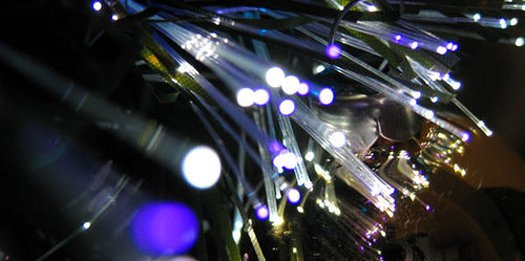
ජර්මනිය හැරුණ විට නැණෝ තාක්ෂණය උදෙසා විශාල මුදලක් වාර්ෂිකව වෙන් කරනු ලබන අනෙක් රට වන්නේ චීනයයි. එම මුදල ඇමරිකානු ඩොලර් මිලියන 250 කි. රුසියාව වාර්ෂිකව ඩොලර් මිලියන 25 ක් ද, අපේ අසල්වැසි ඉන්දියාව වසරකට ඩොලර් මිලියන 23 ක්ද, නැණෝ පර්යේෂණ හා සංවර්ධන කටයුතු සඳහා වැය කරයි.
මහාචාර්ය C. N. R. රාවෝ ප්රමුඛ ඉන්දියානු විද්වතුන් පිරිසක් ඉන්දියාවේ විශ්ව විද්යාල පද්ධති සම්බන්ධ කරගෙන, ජාතික නැණෝ තාක්ෂණික විද්යා ප්රබෝධයක් ඉන්දියාව පුරාම ඇතිකරන ලදී. මේ නිසා රජය පිළිගත් ඉංජිනේරු ආයතන නැණෝ තාක්ෂණවේදය දැයේ දරුවන් වෙත ලබා දීමට පෙරමුණ ගැනීමත්, ඉන්දියානු විශ්ව විද්යාලවල දොරටු නැණෝ තාක්ෂණවේදීන් හට වැඩි දුර අධ්යාපනය ලබා ගැනීමට මංපෙත් විවර කරදීමත් ඒ මගින් ඉන්දියානු දරුවන්ට, නැණෝ ඉංජිනේරු විද්යාව පිළිබඳව, පශ්චාත් උපාධි සේම ආචාර්ය උපාධිද පිරිනැමීමේ පාඨමාලා සංවිධානය වීම ද පුරා දශක දෙකක් (1990 සිට 2012* වැනි කෙටි කාලයක් තුළ ඉන්දියාව පෑ ආශ්චර්යය සැබැවින්ම කටින් බතල කොල සිටුවීමක් නොවීය.
ඉන්දියානු විද්යාඥයෙකු වන විනෝද් කුමාර් ගුප්තාට අනුව වර්ෂ 1990 දී නැණෝ තාක්ෂණ පර්යේෂණ සම්බන්ධව ලියැවී එළි දැක්වුන එකඳු හෝ ලියැවිල්ලක් මුළු ඉන්දියාවටම නැති විය.
එහෙත් මෙම තත්වය වර්ෂ 2007 දී එහෙම පිටින්ම වාගේ වෙනස් විය. වර්ෂ 2007 මුල් මාසය කීපයේ දී එබඳු ලේඛන 2200 ක් ප්රකාශයට පත් කෙරුන අතර 2007 අවසානයේ දී එම ප්රමාණය 21,000 දක්වා ඉහළ නැඟ තිබීම තුළින් විද්යාමාන වූයේ මහාචාර්ය රාවෝ ඇතුළු දේශ පේ්රමි විද්යාඥයින්ගේ ජාතික නැණෝ තාක්ෂණික ප්රබෝධයේ මහිමයයි. මේ වන විට ඉන්දියාව නව සොයා ගැනීම් 35 කට අධික ප්රමාණයකට පේටන්ට් බලපත්රය ද හිමි කරගෙන සිටී.
මේ වන විට අපේ අසල්වැසි ඉන්දියාව, ජපානය, ඇමෙරිකාව, එක්සත් රාජධානිය හා තරමටම නැණෝ තාක්ෂණවේදය අතින් ඉදිරියෙන්ම වේ. ඉතා නුදුරු දිනෙක දී උතුරු ඉන්දියාවේ චන්දිගාර් නගරයේ දී ඇමෙරිකානු ඩොලර් බිලියන සිය දහස් ගණනක නැණෝ පුරයක් (Nano city) ඉදිකිරීමට සබීර් භාටිටා (Sabir Bhatita) සම නිර්මාතෘ .(Hotmail) සූදානමින් සිටී
.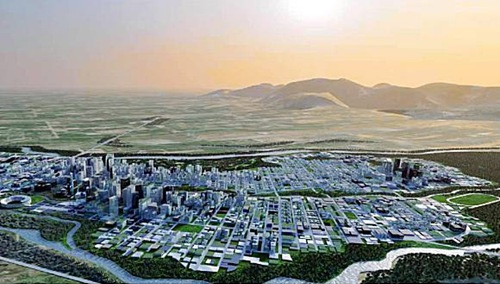
ඒ අප දකින්නේ අසල්වැසි ඉන්දියාවේ නැණෝ ආඩම්බරයයි.
වෛද්ය විද්යාව, කෘෂි කර්මාන්තය, රෙදිපිළි කර්මාන්තය සහ පරිසරය විෂයන්හීලා වර්තමාන ලෝකය නැණෝ තාක්ෂණය භාවිතා කරන අයුරු ආශ්වාදජනකය, විශ්මය ජනකය. මෙකී කරුණු කාරණා ගැන අධ්යයනය කරන කල අපට අප ගැන සිතෙන්නේ ”අනේ දෙව්දත් නුදුටු මොක්පුර” කියා ය.
මේ වන විට චෙක් රිපබ්ලික් ජනරජය ද, නැණෝ තාක්ෂණවේදයේ පෙරලිකාර රටක් බවට පත්වෙමින් මහපරිමාණයෙන් නැනෝ කෙදිති (Nano Fiber) නිපදවමින් සිටී. මේ වන විට චෙක් රිපබ්ලික් රාජ්යයේ විශ්ව විද්යාල 37 ක් සහ ජාතික පර්යේෂණ ආයතන 09 ක් නැණෝ තාක්ෂණය වැඩි දියුණු කිරීමේ පර්යේෂණයන්හි නිරතව සිටී.
කාර්මීකරණය හෝ නාගරීකරණය හෝ කුමන නමකින් හැඳින්වුව ද විෂ ඳුම් නිසා අපට නිදහසේ හුස්ම ගැනීමත් ජල මූලාශ්ර අපිරිසිදු වීම නිසා බීමට පිරිසිදු වතුර ටිකක් නොමැති වීමෙන් ද, දිනෙන් දිනම මරු තුරුලට යන වටිනා මිනිස් ජීවිත සංඛ්යාව වසරින් වසර වැඩි වනු පෙනේ. ලංකාවේ අපට විශේෂයෙන්, එප්පාවල හා උතුරු මැද ඇතැම් ප්රදේශවල අති විශාල ජනතාවක් වකුගඩු රෝගීන් බවට පත් වී සිටින්නේ බොන ජලයට බැර ලෝහ මුසු වීම නිසා ය. එහෙත් අද දවසේදී නැණෝ තාක්ෂණයට මේ විනාශයෙන් ජනතාව මුදවා ගැනීමේ හැකියාව තිබෙන බව, ඇතැම් විට, රටේ බලධාරීන් නොදන්නවා විය හැක.
බහු කාර්ය නැණෝ ද්රව්ය (Multi Functional Nano Meterials) මොළයේ හටගන්නා පිළිකා ගෙඩි :ඊර්සබ ඔමපැර*, පටක හෝ ඉන්ද්රීයන් හෝ රත්කිරීම තුළින් (Heating of organs, and Tissus by placing multi Functional nano meterials) ‘නැණෝ තාප ප්රතිකාර’ ක්රමවේදය : (Nano thermal Therapy) අද දවසේ දී පිළිකා ෙසෙලයන්ගේ මාරයා බවට පත් වී ඇත්තේ, කාබන් නැණෝ ටියුබ්ස් වල වූ සුවිශේෂි තාප සන්නායක ගුණාංගයන් නිසා ය. මේ අනුව බලන කල අනාගත ලෝකයේ, කාබන් නැණෝ ටියුබ්ස් සඳහා දැවැන්ත වෙළඳපොලක් නිර්මාණය වන බව ඉතා පැහැදිලිය. මෙම ලිපිය ආරම්භයේ දීම ලියුම්කරු ප්රකාශ කළ පරිදි ශ්රී ලංකාවේ අපි රත්තරං ආකරයක් මත හිඳගෙන බුලත් විට සපමින් හතර අතේ කැත කරමින් සිටින්නේ යැයි කියූ කතාව, බොරුවක් නොව, සැබෑවක්ම බවට පැහැදිලි සාක්ෂිය වන්නේ,
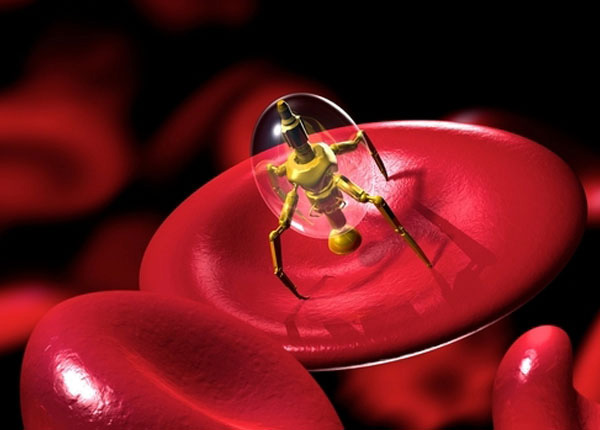
මේ වන විට අපේ පොලවෙන් හාරා ගනු ලබන මිනිරන් (VEIN GRAPHIT) වලින් ඉහත අප සඳහන් කළ විශ්මිත කාබන් නැණෝ ටියුබ්ස් ලෝකයේ මුල් වරට නිෂ්පාදනය කර ඇත්තේ, සිරිලක් මවගේ ප්රඥා සම්පන්න පුත්රයෙකු වූ, දැනට පේරාදෙණිය විශ්ව විද්යාලයේ විදුලි හා විදුලි ඉලෙක්ට්රෝනික ඉංජිනේරු දෙපාර්තමේන්තුවේ ජ්යෙෂ්ඨ කතිකාචාර්්යවරයෙකු වූ, ආචාර්ය ලිලන්ත සමරනායකයෝ නිසා ය. (වර්ෂ 2010 දී සිදු කළ ඔහුගේ මෙම නව සොයා ගැනීම වෙනුවෙන් පේටන්ට් බලපත්රයක් ලගදීම ලැබීමට නියමිතය*
අපි අපේ මිනිරන් (VEIN GRAPHIT) මෙටි්රක් ටොන් එකක් ඇමරිකානු ඩොලර් 1200 කට පිටරටට පටවමු. පිටරැුටියෝ එම මිනිරන් යොදා නිෂ්පාදනය කරනු ලබන තනි ස්ථර කාබන් නැනෝ ටියුබ්ස් (Single Wall Carbon Nano Tubes – SWCNT’S) එක ග්රෑම් එකක් ඇ. ඩොලර් 450 ක මිළකට, වෙළඳපොලේ අලෙවි කරති. මේ වෙනස අප වටහා ගන්නේ කවදාද?
සැබවින්ම අප හිඳගෙන නොව බුදියාගෙනම සිටින්නේ රන් ආකරයක් මතම නොවේ ද? අද දවසේ අපේ රට වැටී සිටින ආර්ථික ආගාධයෙන් ගොඩ ඒමට අවශ්ය ස්වාභාවික සම්පත් සේම, ඉන් නිසි ඵල ප්රයෝජන ගැනීමට හැකි වටිනාම මානව සම්පත ද අප සතුව තිබිය දී ලෝකයාගෙන් ණයට සල්ලි ගෙන, අජඨාකාශයට ‘පාට සරුංගල්’ යැවීමේ සෝබන ව්යාපෘතිවලට කෝටි ගණන් මුදල් වැය කරනවා වෙනුවට, ලෝකයේ තුන්වැනි කර්මාන්ත විප්ලවයේ පෙරගමන් කරුවා වූ නැණෝ තාක්ෂණය(පමා වී හෝ* රටට දැනෙන සේ සංවර්ධනය කිරීමට, වැඩි දියුණු කිරීමට රාජ්ය මැදිහත් වීමක් ලබා දීම, යුගයේ අවශ්යතාවක් නොවන්නේ ද?
දැනට ශ්රී ලංකාවේ නැණෝ තාක්ෂණය පිළිබඳව පර්යේෂණ ආයතනයක්, රාජ්ය හා පෞද්ගලික දෙඅංශයේ ආධාර මත කි්රයාත්මක වෙමින් පැවතිය ද අවශ්ය ප්රතිපාදන සහ යටිතල පහසුකම් වල ඌනතා නිසා ගමන සිදුවන්නේ ඕනෑවට එපාවට ය. ජාතික නැණෝ තාක්ෂණික ආයතනයක් සඳහා පසුගිය වසරේ දී මුල් ගලක් ද තැබුවා මතකය. එහෙත් නැණෝ තාක්ෂණය ගැන මෙලෝ රහක් නැති දේශපාලන බවලතෙකුට අදාල අමාත්යාංශය එකල බාර වී තිබීම නිසා ඒ දේවල් ඒ අයුරින්ම සිදුවන්නට ද ඇත.
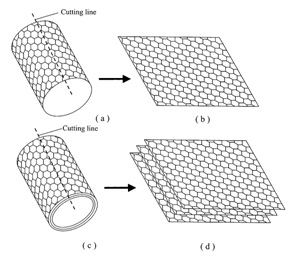
විදුලි ඉංජිනේරුවරයෙකු හෙබ වූ විදුලිය හා බලශක්ති අමාත්යංශය නීතිඥවරියකට හිමිවීමත් නීතිඥවරියක හෙබ වූ විද්යා හා තාක්ෂණික අමාත්යාංශය, යලිත් වරක් විද්යාව දන්නා, එමෙන්ම, පරිසරයට සේම තම මාතෘ භූමියටත් මහත් සේ ආදරය කරන දේශපාලන මහත්මයෙකුට හිමිවීමත් කළු වළාවක ඇඳුන රිදී රේඛාවක් සේ ලියුම්කරු දකී. එදා, මහාචාර්ය තිස්ස විතාරණයෝ දුටු සිහිනය මෙදා සැබෑවක් කිරීමේ වගකීම පාඨලී චම්පික රණවක ගරු විද්යා හා තාක්ෂණ ඇමතිතුමා වෙතින් සිදුවනු ඇතැයි ලියුම්කරු තුළ විශේෂ බලාපොරොත්තුවක් තිබේ. මෙම ලිපිය ලිවීමට ලියුම්කරු පෙළඹ වූ නිමිත්ත ද එය මැයි.
අද අපේ රටේ ආණ්ඩු පක්ෂය සේම විරුද්ධ පක්ෂයත්, එසේම රටේ මහජනතාවත් දෑස් බැඳගෙන කණා මුට්ටිය බිදීමේ, මහා ජාතික ක්රීඩාවක නිරත වී සිටී. පහර දිය යුතු නිශ්චිත ජයග්රාහී ඉලක්කය, හුදකලා වී ඔහේ එල්ලෙමින් තිබිය දී අපි, අතැති මුගුර කිසිදු ඉලක්කයක් නැතිව, හතර අතේ වනමින්, එකිනෙකාගේ ඔලූ පලා ගනිමින් කාලය ගත කරමු.
ජාතියක් වශයෙන් නිදහස ලබා වසර 65 ක් ඉකුත් වී හමාරය. නිදහසින් පසුව අප ආ මඟ දෙස ආපසු හැරී බැලීමේ දී සැබැවින්ම අප සිනාසිය යුතු ද? නැතිනම් හැ`ඩිය යුතු දැයි අපටම නොතේරේ.
නිදහස ලැබූ දා සිට මේ දක්වාම රට පාලනය කළ උදවිය වැඩි කාලයක් ගත කළේ එකිනෙකා විසින් ඇතිකරනු ලැබූ අවුල් ලිහීමට ය. ඒවා හරියට දහං ගැට වගේ ය. ජාතිවාදී අවුල ත්රස්තවාදයක් බවට පත් වී එම අවුල ලිහා ගැනීමට අපේ රටට වසර 30 ක්ම ගියේ ය. වත්මන් ජනපති තුමාගේ දේශපාලන නායකත්වයත්, ති්රවිධ හමුදාවේ කැප කිරීමත් නොවන්නට රට තවම අවුලෙන් අවුලේමය. මෙම මාරක ගැටය ලිහා ගෙන වසර හතරකට ආසන්න වුව ද, රටේ ණය බර එන්න එන්නම වැඩි වෙමින් පවතී. එදා වේල පිරිමසා ගැනීමට බහුතර දුගී ජනතාව ගන්නා වූ වෙහෙස අපමණ ය. ඇත්තෝ කති බොති. නැත්තෝ දත්මිටිද කති.
මේ සියලූ ප්රශ්නවලට සැනසිලිදායක පිළිතුරක් ලඟා කර දීමේ ත් අනාගත සෞභාග්ය උදා කර ගැනීමේත්, රන් දොරටුවේ යතුර වර්තමාන විද්යා හා තාක්ෂණ ගරු ඇමති පාඨලී චම්පික රණවක මහතා අතට දැන් පත්කර තිබේ. වත්මන් අමාත්ය මණ්ඩල සංශෝධනයේ දී රටට ලැබුණ වටිනාම සම්පත එයයි.
පාඨලී ඇමතිතුමා යතුර පාවිච්චි කරන සැටියට රටේ අනාගත හැරවුම් ලක්ෂ්යය හෙට දවසේ දී තීන්දු වනු ඇත.
ජයන්ත විජේසිංහ
(jayantha005@gmail.com)
(විෂය මූලාශ්ර : අන්තර්ජාලය සහ
Intermational Journal of pharmaceutical science and nano technology volume 3
විශේෂ ස්තුතිය : ආචාර්ය ලිලන්ත සමරනායක, ජේ්යෂ්ඨ කථිකාචාර්්ය
පේරාදෙණිය විශ්ව විද්යාලය. ඉංජිනේරු පීඨය*
Image Credits
www.nanomastech.com,urbanarchitecture.in,students.egfi-k12.org,www.popsci.com
